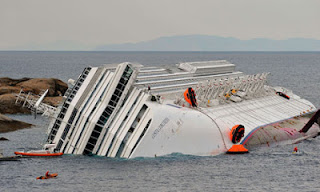May 7, 2012
Our six-month experiment in Italian living has ended. We fly
back today. Lucy and I have held many discussions in the last month about our
conclusions and what will come next. From the start, we knew we could have
three possible outcomes.
First, we could decide that we want to live in Italy more or
less full time. Granted, we still need to work at least five months a year to support
ourselves, but we could spend the other seven months in Italy, in which case we
would need to sell something in the United States and buy a house or apartment
in Italy. We have looked at several places near San Salvatore that we really like,
one in the heart of Montecarlo and another just outside Altopascio.
Or we could conclude that we have spent enough time here already,
and it is time to focus our free time in another direction—other hobbies, other
countries. I have, after all, already exceeded my expectations in discovering family
roots, I have discovered the tie with the West Seattle Spadoni family and we
have re-opened the connection with our Seghieri relatives.
The third alternative is to continue to come to Italy for
about three months a year, in which case it would make the most sense to rent a
room as we have done the past two years. If we take this route, it probably is best
to keep coming back to our room at the Casolare.
Option two doesn’t seem likely, as our initial infatuation
with Italy has turned into an abiding relationship. Like all good romances, we
have become aware of our paramour’s flaws, but we are willing to overlook them
for the sake of our love. We can’t see turning our backs on this place.
But should we commit our entire future to Italy? We have
been leaning away from this idea in our conversations. Sometimes I say it would
be easier to make this decision if we didn’t have such comfortable and
satisfying lives in Gig Harbor. Our house has a beautiful view of Puget Sound
and the Olympic mountains, and I enjoy my work. We live surrounded by American cugini, fratelli, figli and nipoti already, and we have no language
barrier to overcome in communicating with them.
 |
| Claudia's mom and one of Luca and Claudia's twins. |
It was actually during an Easter dinner at the Casolare that
I realized beyond a doubt that Gig Harbor should remain our primary home. While
enjoying the multiple-course feast of Italian delicacies and conversing as best
we could with Claudia and her parents, we watched all the extended families
engage in long, loud conversations. It was pleasant to watch, but it made me
miss my family. One of the most important aspects of being Italian is keeping
one’s family close, and ironically, I can’t do that if I am in Italy.
So we are taking the middle road. While keeping our feet
planted in America, we will continue to come to Italy for about three months
per year, renting, not buying. We will encourage family members and friends to
visit while we are there. We will keep learning Italian and use the time to renew
connections with our Italian relatives. We will try not to be frustrated at the
slowness of the latter two goals. It’s hard enough trying to keep current with
everyone on the American side—while also earning a living—so we just want to
relax in Italy and develop relationships as opportunities arise. We will keep
on collecting information on family history and trying to see if we can find
more relatives in both countries. In this way, we hope to get the best of both
worlds.
Thus, my blog entries will be infrequent in the coming
months, as I focus on work and other more mundane activities of my U.S. life,
but I may add an occasional update on family matters. We are planning a Gig
Harbor-based Spadoni-Seghieri family reunion potluck for August 4. I am hereby
issuing an open invitation to anyone of the Natucci, Donati or Capocchi
families who have ties to a Spadoni or Seghieri, or anyone else who attended
our family 4th of July parties in the past. Thanks for reading . . .
and maybe I’ll see you in August.








